
OPERATING MANUAL
FOR THE AQUATICA DIGITAL
HOUSING FOR THE CANON 7D
PRODUCT # 20065

FOREWORD
Thank you for having selected the AQUATICA Digital Camera Housing System for your underwater photography.
The AQUATICA Digital Housing is the result of a long and continuing relationship with the most demanding underwater
photographers in the world. Each housing is handcrafted, quality checked and pressure tested to a 300 feet equivalent by
a small group of specially trained individuals, each of whom takes the utmost pride and satisfaction in offering the best
underwater camera housing in the world.
The Aquatica Digital Housing was designed for optimum technical and optical performance and to provide easy and
efcient underwater access to essantials functions and controls of the Canon 7D DSLR.
This manual assumes that the user is already familiar with the Canon 7D camera. If not, please read the Canon
instruction manual before attempting to use the housing.
With basic care and maintenance, your AQUATICA housing will give you a lifetime of enjoyment and satisfaction in
producing underwater images.
Please read this manual carefully before using your housing for the rst time and note that: whenever cited the right hand
is your right when using the housing.
SAFETY PRECAUTIONS:
Improper transportation handling or use of this housing might cause a ood or malfunction.
Please read and follow the following precautions:
• Store and transport the housing in a sturdy, shock proof container and avoid travelling with the camera mounted inside
the housing as impact forces especially on the external push buttons will be transferred to the camera.
• When travelling by air, either remove the port or open the housing to prevent pressure built up inside the housing that
could force ports window to pop out or unseat O-ring seal.
• Never change a port or open the housing in a location where sand or similar foreign material might come in contact with
an O-ring.
• Use of accessories or modications and alterations unauthorized by the manufacturer may result in ooding or poor
functioning of the controls.
• Be careful when opening the housing as the pressure buildup inside the housing will exaggerate the force of the latch
spring. Keep ngers away from the path of the latches.
• Whenever changing ports or O-rings, perform a simple seal test with out the camera inside.
• Avoid scratching the acrylic or glass ports and windows.
• Make sure that all ports remain properly attached before rinsing the housing, especially when rinsing without a wired
strobe make sure the Bulkhead connector is sealed with its plug.
• Never attempt to operate the camera in autofocus mode if a focus gear is engaged on the lens to the housing pinion
gear.
• The main O-ring seals should be maintained and cleaned on a regular basis. Read and follow the Care and Maintenance
section on this manual.
• Ensure that the spring loaded secondary lock is properly engaged on the latches to prevent their accidental opening.
page 1

1- Shutter Release lever
2- Main Dial access knob
3- ISO / Flash exposure compensation button
4- M-FN Multi Function Button
5- AF / Drive selector button
6- Metering / WB selector button
7- Bulkhead Connector
8- Bulkhead Connector
9- Accessory bulkhead (shown with optional hydrophone)
10- Focus/Zoom Control knob
11- Focus/Zoom Control pinion gear
12- Lens Release knob
13- Lens Release knob lever
14- Removable Camera Tray
15- Hot shoe connector
16- Grips (x2)
17- Port Release mechanism button
18- Bayonet Flange
19- Latches (x2)
20- Grip’s Accessories mounting holes (1/4”-20)
21- Mode Dial access knob
22- On/Off switch lever
23- Viewnder Eyepiece
24- Live View/Movie selector switch
25- Start/Stop Movie button
26- AF Point / Magnier button
27- AF-ON / AF-Start & Star access lever
28- Quick Control Dial access knob
29- Set button
30- Multi Controller buttons array.
31- Erase button
32- Playback button
33- INFO activation button
34- Picture Style button
35- Menu button
36- Quick Control button
37- One Touch RAW+JPEG button
38- Accessory mounting hole (1/4”-20)
39- Accessories mounting holes (x3)
40- Sacricial Anodes (x2)
41- Rubber Anti Skid pad
42- Rear LCD window
43- Optional Moisture Alarm LED hole
page 2

CONTROLS IN DETAIL
1. SHUTTER RELEASE LEVER: Pulling the shutter release lever back part way activates the camera meter and auto focus. Pulling the lever back all
the way res the camera.
2. MAIN DIAL ACCESS KNOB: Rotates clockwise and counterclockwise. Use alone or in combination with other controls to select
or set various camera functions or modes. In “Manual” the exposure mode controls the shutter speed settings (see camera manual).
3. ISO / FLASH EXPOSURE COMPENSATION: Press to select ISO speed or to select exposure correction of the ash*
* (please note this is only in the event a Canon ash in a housing would be used).
4. M-Fn MULTI FUNCTION: press to select either the focus point or the ash exposure lock function.
5. AF/ DRIVESELECTOR BUTTON: press to select either AF Mode or the DRIVE modes.
6. METERING PATTERN / WHITE BALANCE MODE BUTTON: Press to select the appropriate metering mode and/or White Balance mode.
7. BULKHEAD CONNECTOR: This bulkhead connector may vary from one housing to another, due to owner preferrences, (see page 9)
8. BULKHEAD CONNECTOR: This bulkhead connector may vary from one housing to another, due to owner preferrences, (see page 9)
9. HYDROPHONE: This optional hydrophone is shown mounted on the accessory bulkhead provided on the Aquatica 7D housing, it will record
sound while video recording underwater, it’s design is made to be effective underwater and will not function properly if not immersed.
10. FOCUS/ZOOM KNOB: Turning allows manual focus of a single focus lens or rotation of the zoom mechanism of a lens.
11. FOCUS/ZOOM PINION GEAR: Engages and operates the focus or zoom gear attached to the lens.
12. LENS RELEASE KNOB: activates the lens release button on the camera allowing easy removal of the lens.
13. LENS RELEASE KNOB LEVER: Applies pressure on the camera lens lock button
14. REMOVABLE CAMERA TRAY: Used to attach camera and slide in housing.
15. HOT SHOE CONNECTOR: connects the camera to the Flash Bulkhead. Slide this Connector into the camera Hot Shoe.
When detaching do not pull the cord as this might damage the electrical connections.
16. HAND GRIPS (X2): Left and right grip allowing the mounting of strobe arms and accessories.
17. PORT RELEASE MECHANISM BUTTON: Press down to release the locking mechanism when installing or removing a port or extension.
18. BAYONNET MOUNTING FLANGE: allows the mounting of different ports and extension rings on the housing.
19. LATCHES: Two heavy duty latches with safety locks to protect against accidental opening.
20. GRIP’S ACCESSORIES MOUNTING HOLES: Two 1/4-20 TPI holes on each grip are ready to accept TLC Base Brackets or TLC Base Ball
for strobe arms or accessories.
21. MODE DIAL ACCESS KNOB: Rotate to select the proper shooting mode, C1, C2 and C3 can pre programmed with personal parameter
and care should be taken to understand the various combination available
22. ON/OFF SWITCH LEVER: Rotate to turn on the camera.
23. REMOVABLE VIEWFINDER: A full view of the illuminated camera viewnder displays all necessary information.
This viewnder be removed and replaced with optional Aqua View Finder for a larger displayed image.
24. LIVE VIEW / MOVIE MODE SELECTOR SWITCH: Rotate left or right to select Live View or the Movie mode.
25. LIVE VIEW / MOVIE MODE START-STOP BUTTON: Push to start or stop Live View or Movies mode.
26. AF POINT SELECTOR / MAGNIFIER BUTTON: Push to select the AF pattern desired or to magnify the image on the rear LCD,
Spot, Center Weighted or Matrix metering options.
27. AF-ON / AF-START / STAR ACCESS LEVER: This lever can be pull outward or inward to access both the AF-ON feature and the Star
customizable button, theses are important controls for video shooting and care should be taken to fully understand their working and subtleties.
28. QUICK CONTROL DIAL ACCESS KNOB: It rotates clockwise and counterclockwise. It can be used alone or in combination with other
controls to select or set various camera functions or modes. Refer to camera manual for in depth use.
29. SET BUTTON: Press to approve selection of menu or choosen mode features.
30. MULTI CONTROLER BUTTON ARRAY. Use to navigate through
the multiples options of the menus, modes and features of the camera.
page 3

CONTROLS IN DETAIL, CONTINUED
31. ERASE BUTTON: Press to delete images.
32. PLAYBACK BUTTON: Press to activate the monitor and review images.
33. INFO BUTTON: This button will activate the rear LCD and display all pertinent shooting information.
34. PICTURE STYLE BUTTON: Press to select the desired feature. (note: It is somewhat recommended to shoot in RAW format and
concentrate on these option in post production).
35. MENU BUTTON: Press to activate menu display, scroll using main or quick dial control knob and select using SET function button
36. QUICK CONTROL SCREEN BUTTON: Press to activate the LCD menu display.
37. ONE TOUCH RAW/JPEG BUTTON: Press to add a capture of RAW or JPEG le depending on your shooting mode
38
. MOUNTING HOLE FOR ACCESSORY: a 1/4”-20 TPI hole is supplied to accept a TLC accessory or TLC base ball for mounting a
strobe arm or a modeling light.
39. MOUNTING HOLES: Three 1/4” X 20 holes are provided for mounting strobes trays or accessories.
40. SACRIFICIAL ANODES: (2X) zinc anodes are installed to protect your housing against salt water corrosion; theses are made to deteriorate
easier than the other strategic part of your housing, hence the name sacricial anodes. These anodes need to be replaced by the user
as needed.
41. RUBBER ANTI SKID PADS: Four rubber pads are provided to protect the housing and preventing it from sliding on wet decks.
42. REAR WINDOW LCD: This port window allows viewing of the recorder images and is used in the Live View as well as the Video mode
for framing, a cutaway in the upper right corner allows the users to see the recording pilot light. Allow viewing of menus as well.
43. MOISTURE ALARM LED MOUNTING HOLE : A mounting hole is provided for the optional moisture alarm.
page 4

FEATURES
The Aquatica Digital housing serie is issued from the world’s most technologically advanced underwater housing lineage, ergonomically
designed to place all the essential camera controls under your nger tips and features the following:
A. A port locking mechanism to prevent accidental rotation of the port or extension mounted on the housing
B. A Lens Lock Release control that will activate the lens release button of camera from the outside of the housing, this lever can
be pull out to allow the camera/lens/gear to be removed together for easy battery replacement.
C. A quick release tray, allowing fast and easy removal of camera.
D. Large ergonomic and easy to operate controls for most of the manual and computerized camera functions.
E. A exible strobes connector circuitry that allows evolution according to ones needs (see page 9).
F. The following controls can be easily manipulated or accessed underwater:
- Mechanical shutter release.
- Shutter speed through the Main Dial
- Aperture through the Quick Control Dial
- Focus / Zoom
- AE-L/AF-L & AF-ON and * (star) access
- LCD panel illumination & information display.
- Exposure mode (Mode)
-.Exposure Compensation
- Focus Area Selector
- ISO sensitivity
- Info & Playback
- Menu, Picture Styles, quick controls & RAW/JPEG one touch button
- Delete button access
- Live view & Video recording access
G. A complete selection of bayonet mounted ports including an 6”, 8” and 9.25 diameter dome, two at ports and various
extension rings to preserve the image quality of your EF mount lenses.
H. A comprehensive selection of focus and zoom gears to access all popular lenses useful to underwater photography plus a wide
range of related accessories.
PREPARATION OF THE HOUSING
1. Attach Grip Bracket to the housing:
The housing comes with two Grips for both right and left hand grips which should be installed on the sides of the housing with the
supplied screws and Allen key. Occasionally remove the grips and lubricate the screws (see Care and Maintenance: of the housing.)
Depending on which strobe system you are using, you can mount the necessary shoes or brackets onto the 1/4”-20 threaded holes on
the top of the hand grips. The AQUATICA ® line of Technical Lighting Control ® strobe arm is recommended.
There are also three (3) 1/4”-20 threaded holes on the bottom of the housing that can be used for various mounting application trays or
tripod. As well there is another hole on top front half of the housing for mounting accessories such as a video or focusing light.
Mount your strobe and connect the sync cord to the housing’s strobe bulkhead. Be sure to read the section titled “Care and
Maintenance: of the O-rings.”
2. Lubricate the Main O-ring Seal:
Before use, carefully inspect the Main O-ring seal in its groove on the front half of the housing to conrm that it is free from scratches
or foreign material. When needed lubricate the O-ring with a light coat of Aquatica O-ring Lubricant.
When replacing the O-ring place the entire O-ring over the O-ring groove and start by pushing the O-ring in the corners. Work your way
around the O-ring making sure it is snugly sitting in the groove.
For proper handling and maintenance of O-rings be sure to read the section titled “Care and Maintenance: of the O-rings.”
page 5

PREPARATION OF THE PORTS
1. Select the correct port:
Depending on whether you’ve decided to shoot macro or wide angle photography, you will be installing either a at Macro Port (product
# 18426 or 18428), or a Dome Port (Product # 18405, 18407 or 18409). See lens chart for the suggested port and accessories.
Macro Port Extension Rings: If you intend to use a longer Macro lens than the Canon EF-S 60mm you will require an additional
extension ring. This extension rings t between the Macro Port and the housing to provide the extra space necessary for the longer
lens. See lens chart for the suggested port and accessories.
Dome Port Extension Rings: When using a wide angle or zoom lens, the Dome Port may require the uses of an extension ring to
closely match the optical center of both the dome and the lens.See lens chart for the suggested port and accessories.
In order to reduce glare, maximize contrast and offer physical protection to the dome, the use of a dome shade is highly recommended.
See lens chart for the suggested dome shade.
A comprehensive list of the lenses supported and their required extensions and/or accessories is supplied at the end of this manual. For
the latest uptdated version of this lens chart, you can refer to the Lens Chart for the Aquatica 7D housing on www.aquatica.ca
2. Clean the port:
Dirt, grease or ngerprints on the port especially on the inside, can adversely affect the quality of the image. Acrylic ports should be
cleaned with plastic cleaner and the glass ports should be cleaned with lens cleaner. For more details be sure to read the section titled
“Care and Maintenance: of the Ports.”
3. Lubricate the port O-ring seal:
Before using the port, remove the O-ring on the rear of the port and lightly coat it with silicone grease. For more details be sure to read
the section titled “Care and Maintenance: of the O-rings.”
PREPARATION OF THE LENS
Depending on the lens used, there are a number of gear options possible. Using the right gear (s) and correctly mounting
them on the lens is very important for a smooth housing operation. Follow the installation directions included with each gears carefully.
The use of EF types lenses is mandatory.
A comprehensive list of the lenses supported and their required gears is supplied at the end of this manual. For the latest uptdated
version of this lens chart, you can refer to the Lens Chart on www.aquatica.ca
Notes: If the camera is set in manual focus a focus gear must be mounted on the lens. If you are using a zoom lens with a
zoom ring the camera must be on auto focus, also note that if using a dome port you may need to install a closeup diopter on the
lens to correct the minimum focusing distance of the lens so that it will be able to focus on the virtually projected image created by the
dome. See lens chart for the suggested diopter, if required for your lens/port combination.
Gear installation:
Mounting the gear over the focus or zoom ring of the lens.
(a) For Slip-on gears (gears without mounting screws): Slide the gear over the lens and align the gear with the front of the lens focusing ring.
(b) For gears with mounting screws:Tighten lightly the three set screws evenly. Tighten each screw approximately ½ a turn working
around the gear until all the three (3) screws are tightened, and the gear is concentric with the lens body.
CAUTION: Do not over-tighten these screws, as this might bind the lens, thus restricting the rotation of the focus ring and/or damaging
the lens. Conversely under-tightening these screws might cause the gear to slip or loose alignment.
Rotate the focus ring several times to make sure it moves smoothly and the gear does not slip before closing the housing
WARNING: If the lens is a not of the USM type, never attempt to operate it with the camera in autofocus mode and with a mounted
focus gear engaged. This might cause serious damage to your lens focusing motor.
Zoom lenses: When using a zoom lens, the gear should be mounted on the zoom lens control. The housing focus control then
becomes
the zoom control. Focusing of lens is achieved by using the camera’s autofocus system.
page 6

CAMERA PREPARATION AND INSTALLATION
1. Important Note: prior to installing the camera in the housing: Please remove the rubber protective guard from the viewnder
on your camera before using the housing. remove the camera strap, and/or any object that might obstruct installation or get in
the way of that attach the strap should be removed or tucked away
2. Pull out the lens lock lever (key # 12) on the front of the housing and the mode dial knob (key # 21)
3. Remove the saddle from the housing and carefully place the camera on it and ensure
the camera is properly installed and aligned as follows:
a) Align the Tripod Socket of the camera with the mounting screw. Tighten the
mounting screw securely while ensuring that the camera position is not altered.
set arresting block as per drawing at right.
c) On the rear cover of the housing, position the ON / OFF (key # 22) in the ON position
and do the same to the camera.
d) Also on the rear cover, position the LIVE VIEW / MOVIE mode lever (key # 24) to
Live View on the housing and do the same on the camera
e) Important: if using optical ber type cords, pop the ash up and guide the camera
carefully until the ash is properly positioned in front of the optical port reectors.
f) Slide the quick release tray back into place and lock as per drawing at right.
CLOSING OF THE HOUSING
Once the camera is secure on the saddle inside the front half of the housing, simply:
1. Slide the housing’s hot shoe connector onto the hot shoe base of the camera,
as seen in photo at right.
Before closing the housing always ensure that:
1. The main O-ring on the front half of the housing is clean,lubricated and properly seated for a positive seal.
2. The sealing surface on the rear half of the housing is clean and free from any scratches or physical damage.
3. All cords or wires are tucked in so that they do not interfere with the closing of the housing.
4. The ON/OFF & Live View / Movie levers are in the same position on both the camera and the housing .
To close the housing simply:
i. Join the front and rear halves of the housing using the two dowel pins at the bottom of the housing as a guide.
ii. Hold the housing with both hands and look around the sealing surface to ensure that the O-ring remained properly seated and
that no cords, wires are caught between the edges.
iii. Close the two sides latches simultaneously. Reverse the process to open housing
CAUTION: if you feel any resistance as you attempt to close the latches, do not force the closure. Check for an obstruction
and try again.
iv. Verify that the safety locking mechanisms of the latches are properly engaged to avoid any accidental opening.
page 7
WARNING

LENS INSTALLATION
With the camera inside the housing, push the lens release lever (key # 12) into the proper position, install the lens
prepared with the gears through the port opening in the front of the housing. Ensure that the lens mounted gears are
properly installed and aligned. Rotate the focus / zoom control knob toensure that the gears are properly meshed, do not
grind and that their rotation is smooth.
Note: To avoid damaging the auto-focus mechanism of the camera when using standard EF type lenses, you should
always set the Focus Control to “M” Manual for testing the proper meshing of a focusing gears. this procedure is not
required with USM type lenses.
CHANGING A LENS (REMOVING A LENS)
Two differents methods can be used for removing/replacing a lens.
The lens mounted gears may restrict the view and ease of access to the lens release button on the camera body. The
AQUATICA 7D Digital Housing features a lens release lever (key # 12) that is designed to trigger the lens release button
of camera to allow easy removal of lens.
To remove a lens, remove the port, simply rotate Lens Release Lever (key # 12) downward to press the camera body lens
release, hold and turn the lens to remove.
Or pull out the lens release lever (key # 12) out of the way, open the back cover remove hot shoe from camera and pull
out the complete camera & lens, replace the lens and reinstall.
MOUNTING THE PORT
Before mounting the Port on the Housing always ensure that the port O-ring is clean, lubricated and properly seated in its
groove and that he sealing surface on the Housing is clean and free of physical damage.
The AQUATICA 7D Digital Housing features a locking bayonet mount (#17). To mount the port or extension ring simply:
1. Place the housing on its back on a soft steady surface.
2. Place the port or extension ring inside the main port of the housing.
Align one of the four alignment notches with the opening of the housing.
3. Place your hands on opposite sides of the port or extension ring.
4. Push with even force on both sides of the port or extension ring until
you feel it snap into place. Make sure the bayonet is completely inside the
housing.
5. Finally press the port lock button down, turn the Port clockwise
until it stops and then release the port lock button. Do not force it.
If there is too much resistance take the port off, check the O-ring
and retry.
6. Check to ensure for the proper seating and sealing of the port
or extension and that it is safely locked on the housing.
Note : It is recommended that you familiarize yourself with this
mount by trying it without the camera, this will allowyou to see
the inside view of the bayonet mount and of the ports or extension
rings in the housing.
page 8

MOUNTING AND ATTACHING FLASHES
The aquatica housing for the Canon 7D offer a choice of connectors in order to take full advantages of available strobes on the market. Standard choice
available are:
20065: Two Nikonos type manual connectors.
20065-OPT: Two optical ber connectors to accept two Sea & Sea elbow type cords or two straight type cord (INON).
20065-HYB One Nikonos Manual connector and one Optical connector to accept either one Sea & Sea elbow type
cord or two staright standard optical cords.
20065-KM One Ikelite manual type connector
Optional also are: S6 type connectors and available in the summer 2010, the Nikonos type 6 pins connectors
Depending on which strobe system you are using, you can mount the necessary shoes or brackets or Base Ball onto the threaded holes on the top of
the hand grips. Use of the Aquatica Technical Lighting Control Strobe Arm System is recommended.
There are also three 1/4”-20 threaded holes on the bottom of the housing that can be used for various mounting applications. For example, A mounting
tray can be tted on the bottom of the housing. A 1/4”-20 threaded hole on top of the tront half of the housing will accept an Aquatica bracket or Base Ball
that can hold a small dive light or a strobe arm.
Internal switch board circuit:
Your Aquatica 7D Pro Digital housing might be supplied with two Nikonos type connectors which are in turn
connected to a switch board circuit. Optional Ikelite bulkheads connectors are also available.
When preparing the sync cord be sure to lubricate the O-ring on the sync cord’s connector with a light coat of
Aquatica O-ring lubricant, Also advisable is to put a light coat of O-ring lubricant on the threads of this connector.
Your Canon Digital camera design does not allow ashes to be connected directly to the camera and be used in eTTL unless they are original Canon
ashes in third party housing with the required connector and cords.
On your housing you will nd two bulkhead connectors, the main and secondary connectors are wired through a switch board that will allow you to
eventualy evolves as underwater strobes technology does in the future. By default you housing is delivered with the switch board set to full manual, if the
eTTL exposure is desired then it can be made in either of two methods:
1) By using a single ash from Canon or other brand (that is eTTL compatible with your camera) in a underwater housing connected with a proper 6
pins TTL cord to a compatible 6 pins connectors on your Aquatica housing.
2) By using an external eTTL converter connected to a 6 pins connector on your Aquatica housing to which one or two underwater strobes with compat-
ible TTL cords are then connected to this converter, (check strobe and converter
manufacturer for compatibility).
Set up instruction for eTTL operation: Using the tip of a pen push the switches 1, 2, 3 & 4 to the ON (up) position, this will activate the connections on
your main 6 pins bulkhead connector allowing eTTL communication between the camera and the housed ash or eTTL converter.
Set up instruction for manual operation: All switches must be in the OFF (lower) position, in this case all eTTL connections are disabled and only the
ground and sync are left active, this will allow two underwater strobes or housed ashes to be connected directly via the main and secondary bulkhead.
FOR OPTICAL CONNECTORS
The housing with optical connectors are supplied with adapter for typical straight cord used by INON and
various strobe manufacturers and angled Sea & Sea type cords, select the desired connection and install
on the optical port base, tighten the set screw into place with the supplied hexagonal wrench.
In order to to use Opticall triggering, the built-in ash of the camera need to be in the up position, this is done
at time of installation. Select the proper sync mode (rear, slow, etc.).
Note: it is advisable to turn the camera off when travelling to your dive site in order to avoid useless drain
of the camera and strobes the batteries. Field testing as shown that mixing different brands of strobes give
unreliable result and should be avoided. Also noteworthy is the fact that many strobe offer Optical triggering,
but TTL is only available with thoses that offer S-TTL type of signal, please check carefully prior to purchasing
your strobes to make sure that they are indeed able to provide TTL exposure.
Remember not to install the hot shoe if shooting optically triggered strobes (HYB version) as this hot shoe
disengages the internal built-in ash of the camera and prevent this later from triggering. Always do a few test
exposures once you nished setting up the strobes
page 9
Sea & Sea Type angle
INON Type Straight cord

TAKING A PICTURE
Following are the basic techniques. For more information and advanced photography please study the Canon 7D
instruction manual.
NOTE *The quick and main dial control can access a wide range of modication to the current functions allowing the
users to conveniently position vital controls at their ngertip.
1. Rotate the Mode dial knob (key # 21) and select the desired exposure mode. Options in sequence are:
Programmed AE (P), Shutter Priority AE (Tv), Aperture Priority AE (Av) or Manual Exposure (M).
Note: When using a ash, it is reccomended that the camera be used only in Single Frame Motor Drive or
there is the possibillity that the camera will re before the ash can recycle.
3. Push the Metering Pattern Knob (key# 6) and select the metering system symbol you wish to use in the
rear LCD panel.
4. Pull the Shutter Release Lever partially back. This will activate the camera’s meter and autofocus system.
5. If using manual focus use the Focus Knob (key # 10) on the housing or on the at port to focus.
6. If using the Manual or Shutter mode adjust the main dial knob (key # 2) or Quick dial (key # 27) to set the
exposure.
7. Pull the Shutter Release Lever (key # 1) the rest of the way until the camera res.
Shooting tip:
The lever in the rear right portion of the housing (key #27) can be used to access the AF-ON and/or the * (star) buttons, just
pull outward or inward to access the desiresd one, theses two buttons can be modied to conform to your personal style of
image making, careful reading of the Canon 7D manual is recommended to pull the maximum out of theses features
page 10

USING THE HOUSING
Whenever changing ports or O-rings, it is highly advisable to perform a simple seal test without the camera inside. Strapping a weight to
the housing and lowering the unit to a depth of 30 to 50 feet of water for at least 10 minutes will assure you that the seating of the new
port or o-ring is proper. This test, though time consuming and often considered unnecessary, may save your camera equipment from
irreparable water damage.The housing is now ready for the dive.
CAUTION: Never jump into the water with the housing. It is best to have the system handed to you after you have made your entry,
or have it lowered to you on a rope. Make certain that ropes of other equipment stay clear of the system. Never handle the housing by
grabbing the port or if using one, the Aqua View Finder, make sure that boat staffer are familiar with this procedure and advise them to
manipulate only by using the grips provided with the housing.
When photographing, be sure to respect the environment. Avoid damaging marine life or manipulating sea creatures to obtain a pleasing
photo
. The housing is slightly negatively buoyant so that you can lay it down on the bottom, but avoid laying it on living coral or other
delicate marine life.
Changing the memory card
Always take care to thoroughly dry the housing before opening it to change memory card. Wipe the housing off with a dry towel. If
possible it is suggested that the housing be blown dried by directing an air nozzle around the main o-ring before opening.
Rest the housing on its front with the lens facing down, be carefull to protect the port surface, release the two side latches simultane-
ously. Lift the rear part of the housing and place it in a secure location.
This minimizes the possibility of any residual water falling into
the housing and on to the camera when the housing is opened or damage to the sealing surface
.
TRANSPORTING THE AQUATICA Pro Digital housing
Store the AQUATICA Pro Digital housing in a sturdy, shock proof container. When travelling by air, remove or loosen the port. This al-
lows for equalization of the air pressure inside the housing to the external air pressure. Failure to do so may cause serious damage to
the acrylic ports. Avoid travelling with the camera mounted in the housing. If you must do so, remove the lens as external pressure can
damage the camera.
CARE AND MAINTENANCE
Of the housing:
After each and every salt water dive, your housing system should be soaked or rinsed in fresh water. The housing system should soak
in fresh water for at least 30 minutes. During this soaking period reach into the water and operate all the controls several times.
Be sure to remove the housing’s main o-ring and clean it after every use. Refer to Maintenance: Of the O-rings. To ensure that the hand
grips won’t fuse on to the housing due to the exposure to salt water, it is also a good practice to occasionally remove the hand grips.
Clean and lubricate the bolts with a small amount of WD-40.
WARNING: Use WD-40 carefully, sparingly and only on metal to metal surfaces. WD-40 can damage the acrylic on the ports, the
optical surfaces on lens as well as the O-rings.
Of the Ports:
Care should be taken with the Dome Port and Macro Port to avoid scratches on the lens surface. The acrylic port is softer than glass
so minor exterior scratches are often unavoidable. However, since the indices of refraction for acrylic and water are almost equal the
scratches will not seriously impair image quality. Internal scratches(air side) must be avoided as they do not ll in with water and will
affect the quality of the image.
Clean the dome using only products recommended for cleaning acrylic and a soft lint free cloth. Dust on the interior surfaces of the port
can be removed with a soft camel hair brush or a blower brush. Caution must be taken when using aerosol devices as not to spray the
lens material with the liquid propellant as this may seriously affect the optical properties of the port. Use of pressurize air from a dive
tank is not recommended, the force of the air stream may easily dislodge a port or O-ring, It is advisable that ports should be removed
and serviced after avery dive.
page 11

Of the Latches:
The two latches of the AQUATICA Pro Digital are designed to have a locking action to prevent accidental opening.Always
ensure that the locking mechanism is secure. Watch for the build-up of corrosion or salt residue around the latches. This
will appear as a white material. Lubricate the latches with a small amount of WD-40 to remove the corrosion
or salt residue build-up.
Of the O-Rings:
The O-rings that need to be maintained on a regular basis are the main housing O-ring and the O-ring on the lens port
The main O-ring should be cleaned on a daily basis and the port O-ring should be cleaned daily or each time the port is
changed.
Of the sacricial anodes:
The two anodes attached to the bottom parts of the housing are there to prevent corrosion due to electrolysis, as time
goes they will deteriorates and need replacement, contact your dealer for replacement (parts # 19220).
TO SERVICE O-RINGS ON THE HOUSING MAIN O-RING, PORTS AND EXTENSION RINGS
1. Remove the O-ring. It is important never to use a sharp instrument when removing an O-ring as this may damage
the O-ring groove or the O-ring itself. A bobby pin or edge of a credit card works well.
2. Once the O-ring is removed, it should be examined for damage. Check to make sure that the O-ring is free of
nicks and cuts and that it retains its original round prole. O-rings that appear to be damaged should be discarded
immediately and replaced with new O-rings.
3. Rinse the O-ring with fresh water and dry it with a clean lint free cloth.
4. Clean the O-ring groove (where the O-ring sits) with a Q-tip. Be sure to remove any lint the Q-tip may leave
behind. Inspect the groove for damage.
5. Wipe the part of the housing that the O-ring seals against with a clean lint-free cloth.
6. Re-grease the O-ring with a thin layer of O-ring grease until it appears to be smooth and shiny. Do not over
grease it. Use just enough grease so the O-ring will pull smoothly through your ngers. Excessive amounts of
grease will only serve to attract dirt to the o-ring.
7. Make sure that the O-ring is properly (envenly) installed in the O-ring groove.
8. To reinstall the clean and lubricated O-ring, place the entire O-ring over the groove and start by pushing theO-ring
in at each corner then, push the O-ring at each side and nally, work in the rest of the O-ring. Never start at one
end and work your way around the O-ring. This places uneven tension on the O-ring which may cause the O-ring
to stretch resulting in excess O-ring, which will have no place to go.
There are internal O-rings on the housing controls as well. These O-rings are not as susceptible to damage as they are
not exposed but they do require yearly maintenance and are not user serviceable. The housing should be returned to
AQUATICA or to an authorized AQUATICA service facility for this annual maintenance. Check for the closest service
center on our website www.aquatica.ca.
An internal moisture alarm can be installed in your AQUATICA 7D Digital housing (Product # 20023). This moisture alarm
is powered by an easily replaced CR 2032 battery. Please read the instruction sheet provided for your moisture alarm
prior to installing the battery.
page 12

Technical Lighting Control
17504 17503 17501
17752 17753 17754 17757 17758 17887
17550
1/4” x 20 threads
17552
5mm threads
17750
17750
17657
17555
17651
1/4” x 20 threads
17660
17655
8mm threads
17655
8mm threads
17667 17673 17677 17681
17800
17658 17666 17671 17675 17679
17889
17506 17510
17800
17800
17667
17673
17677
17681
17688
17691
17759
17692
Ikelite DS 125, DS 50, DS 51
17690
Nikonos SB-105
17888
Inon
17507
No pins, no O-rings just tough, reliable performance from TLC
For Sea & Sea strobes
For Ikelite Grip
17856
For Ikelite TTL
Slave sensor
Sea & Sea
Ikelite DS 200
Hartenberger
17802
Arm clamp
to 1” ball
17509
17508
17854
17853
FOCUS / TARGET LIGHT SET UP
17553
Two 1/4” -20 x 34” inc lud ed
Ikelite Knob Ikelite DS200 Nikono s SB -105 8mm kn ob UK Aq ua Su n In on Strobes
17853
Focus/target light
www.aquatica.ca
17511 17512 17513
175161751517514
17682

WARRANTY
PLEASE READ CAREFULLY
One year Limited Warranty.
Thank you for purchasing an AQUATICA manufactured product! Your AQUATICA housing is handcrafted by a
small group of specially trained individuals - each of whom takes the most pride and satisfaction in offering you
the best underwater camera housings in the world. All AQUATICA products are guaranteed against defects in
material or workmanship for (1) one full year from the date of purchase for consumer use. these same products
when used commercially will carry a 90-day warranty. No statutory warranty applies. Camera housed in AQUATICA
housings are not covered under this warranty and ANY WATER DAMAGE SUSTAINED DUE TO INSTALLATION
ERROR OR ANY OTHER REASON IS NOT THE RESPONSABILLITY OF AQUATICA. Therefore the appropriate
insurance should be maintained by the user.
Warranty does not apply to replaceable seals or damages to impacts or abrasive surfaces. Warranty applies
only to products purchased from authorized AQUATICA dealers and does not extend beyond the original retail
purchaser. Unauthorized modications or repairs will automatically void this warranty. this applies to removal of
serial numbers and AQUATICA identication labels.
To obtain service during or after the warranty period you must notify AQUATICA at 514-737-9481
and ship BY REGISTERED MAIL (INSURED) ONLY, enclosing your proof of purchase to:
AQUATICA
3025 De Baene
Montreal (Quebec)
H4S 1K8
Mark clearly on your package “Canadian goods returned for repair”
Do not ship by any other means.
Unauthorized packages will be refused.
YOUR SERIAL NUMBER_______________________________
page 12
-
 1
1
-
 2
2
-
 3
3
-
 4
4
-
 5
5
-
 6
6
-
 7
7
-
 8
8
-
 9
9
-
 10
10
-
 11
11
-
 12
12
-
 13
13
-
 14
14
-
 15
15
Aquatica A7D 20065 User manual
- Category
- Bridge cameras
- Type
- User manual
Ask a question and I''ll find the answer in the document
Finding information in a document is now easier with AI
Related papers
-
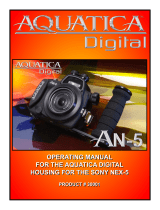 Aquatica Digital A1 Dcx User manual
Aquatica Digital A1 Dcx User manual
-
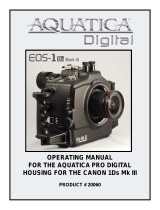 Aquatica Digital EOS 1Ds MK III User manual
Aquatica Digital EOS 1Ds MK III User manual
-
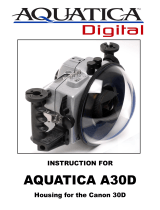 Aquatica Digital A30D User manual
Aquatica Digital A30D User manual
-
Aquatica Digital D200 User manual
-
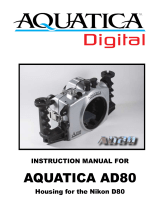 Aquatica Digital AD80 User manual
Aquatica Digital AD80 User manual
-
Aquatica Digital Nosta-Ash-Legs Installation guide
-
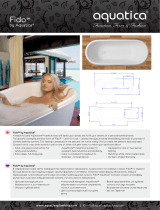 Aquatica Fido-Wht Installation guide
Aquatica Fido-Wht Installation guide
-
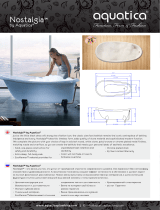 Aquatica Nosta-Ash-Legs Installation guide
Aquatica Nosta-Ash-Legs Installation guide
-
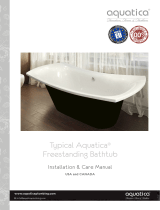 Aquatica Pool Solo-Wht Installation guide
Aquatica Pool Solo-Wht Installation guide
-
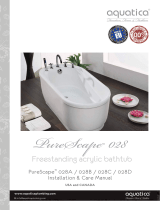 Aquatica PureScape 028D Installation guide
Aquatica PureScape 028D Installation guide
Other documents
-
Aquatica Digital D300S User manual
-
Dymo K5 User manual
-
 Aquatica Digital AQUATICA A300 User manual
Aquatica Digital AQUATICA A300 User manual
-
Olympus V6300570E000 Datasheet
-
Ikelite Zoom / Focus Gear 5509.21 User manual
-
Ikelite DCR-HC15 User manual
-
Ikelite Optical Slave Converter for Remote Triggering of DS Strobes User manual
-
Sea & Sea YS-110 Yellow Sub User manual
-
Ikelite Fiber Optic Converter for DS Strobes (3rd Gen) User manual
-
Insignia NS-CANTTL Quick setup guide























